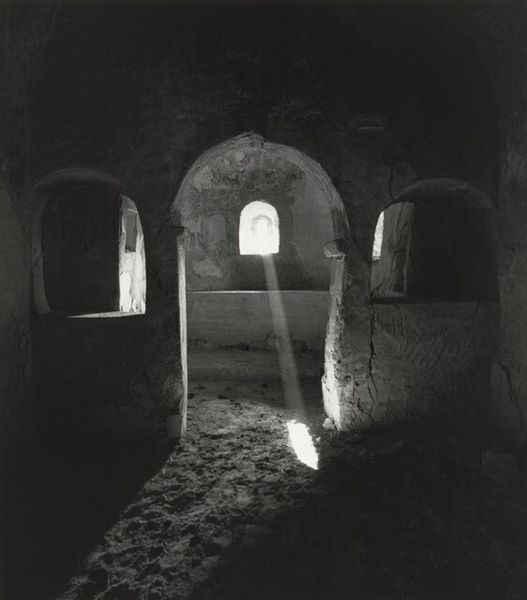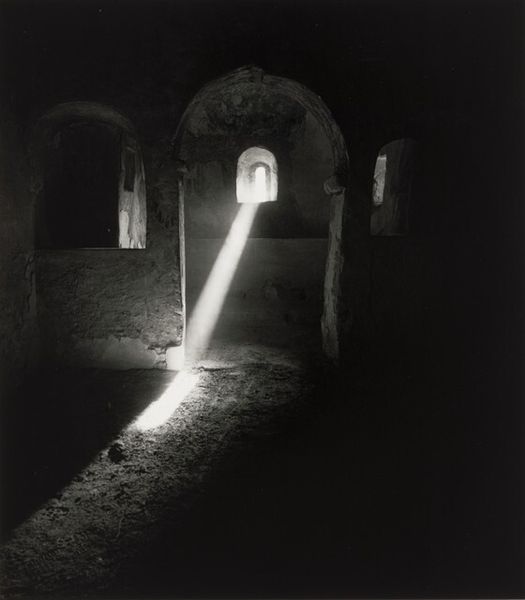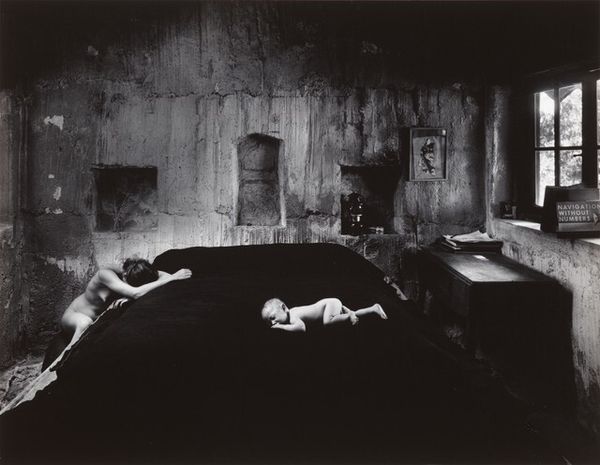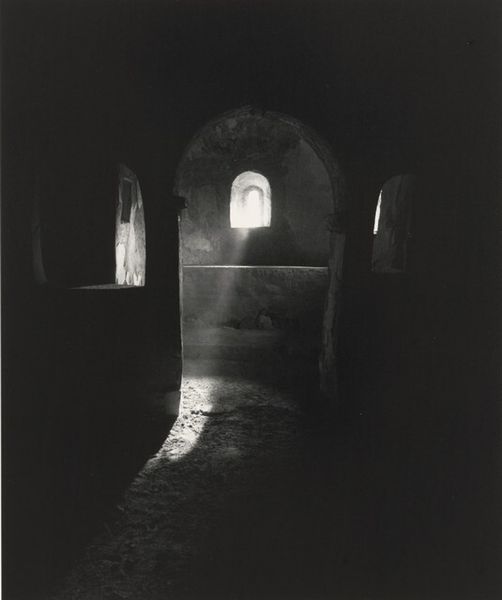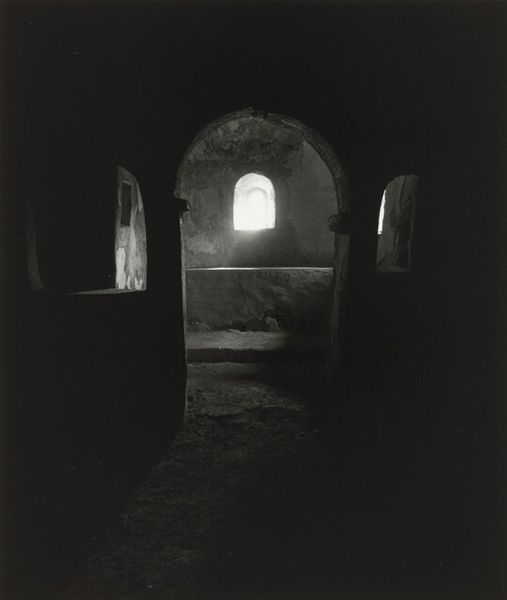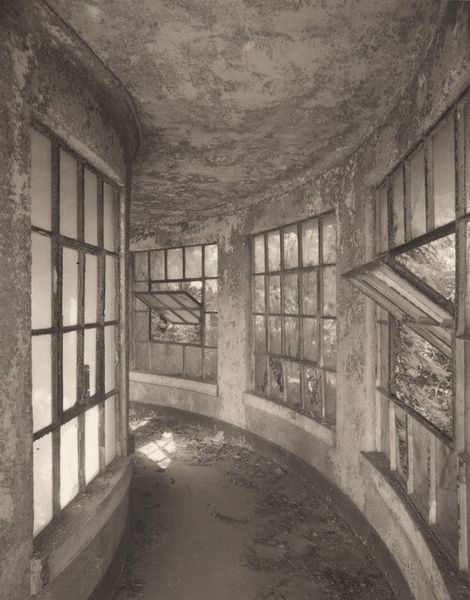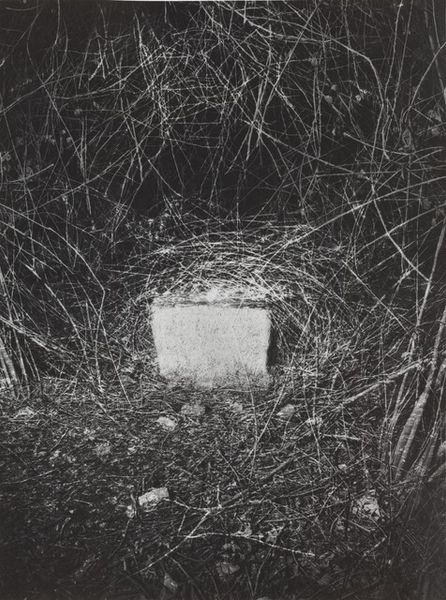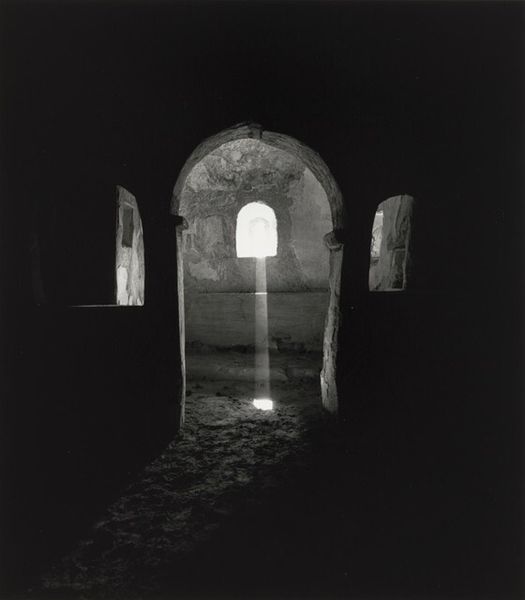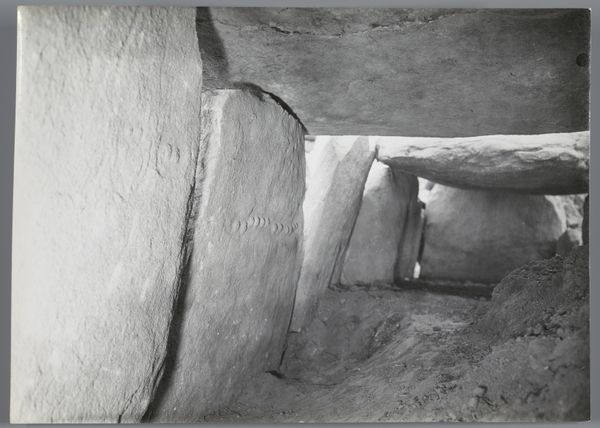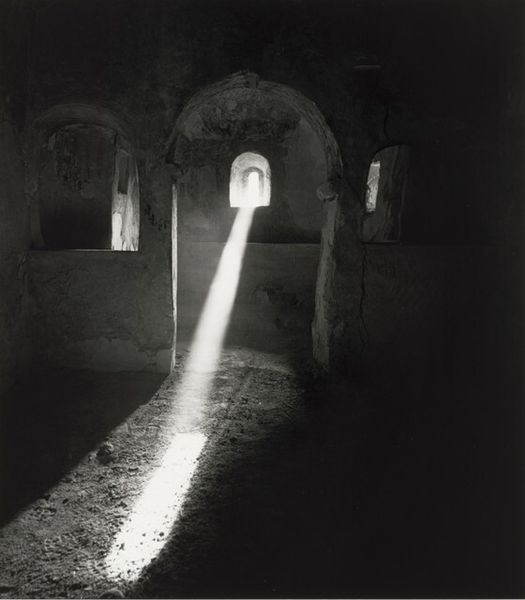
photography, gelatin-silver-print
#
still-life-photography
#
black and white photography
#
landscape
#
street-photography
#
photography
#
gelatin-silver-print
#
monochrome photography
#
monochrome
#
monochrome
Dimensions: image: 19.8 × 19 cm (7 13/16 × 7 1/2 in.) sheet: 20.2 × 25.4 cm (7 15/16 × 10 in.)
Copyright: National Gallery of Art: CC0 1.0
Curator: Emmet Gowin, best known for his intimate portraits of his family, made this gelatin-silver print, “Scarperia, Italy,” sometime between 1975 and 1976. What's your initial reaction? Editor: Stark. The image is dark, almost claustrophobic, drawing the eye into its sharply receding planes. That intense vignetting amplifies the sense of being trapped in that dimly lit space. Curator: That feeling of confinement is palpable. Gowin was deeply interested in documenting the impact of humanity on the natural world. Though not immediately apparent, this image, with its harsh, contained space, speaks to themes of control and environmental tension, hinting at a rural decline tied to Italy's rapid industrialization during the postwar period. Editor: Indeed. Note the geometry; that looping chain cuts diagonally across the frame, bisecting the visual field while anchoring it to the space and a rather forlorn-looking chicken. It introduces a fascinating play of light and shadow. I find how the textural nuances of the stonework and the rough, uneven ground contrast, and also unify, the image plane compelling. The composition is deceptively simple, with that chain creating dynamism in the otherwise static composition. Curator: And the presence of that single, lone hen cannot be overlooked, either. It can be interpreted as a symbol of domesticity subjected to those same relentless forces of change that impact rural populations as a whole, which raises many intersectional questions. To what degree can we draw parallels, say, to contemporary rural conditions under globalization and mass agriculture, with implications for local economies? Editor: Agreed, those contextual elements are key. But considering the structure further—note the subtle tonal variations achieved within the monochrome palette. This enhances the dimensionality. It is the effective interplay of light and dark, of texture and form, that truly captures the essence of the space, creating tension between what's hidden and what's revealed. Curator: Precisely, the stark beauty of “Scarperia, Italy” invites viewers to confront those harsh realities embedded within rural existence, opening avenues of dialogue across eras and localities. Editor: The dialogue created with composition is an evocative space indeed. There's a real art of form and function working hand in hand here.
Comments
No comments
Be the first to comment and join the conversation on the ultimate creative platform.
